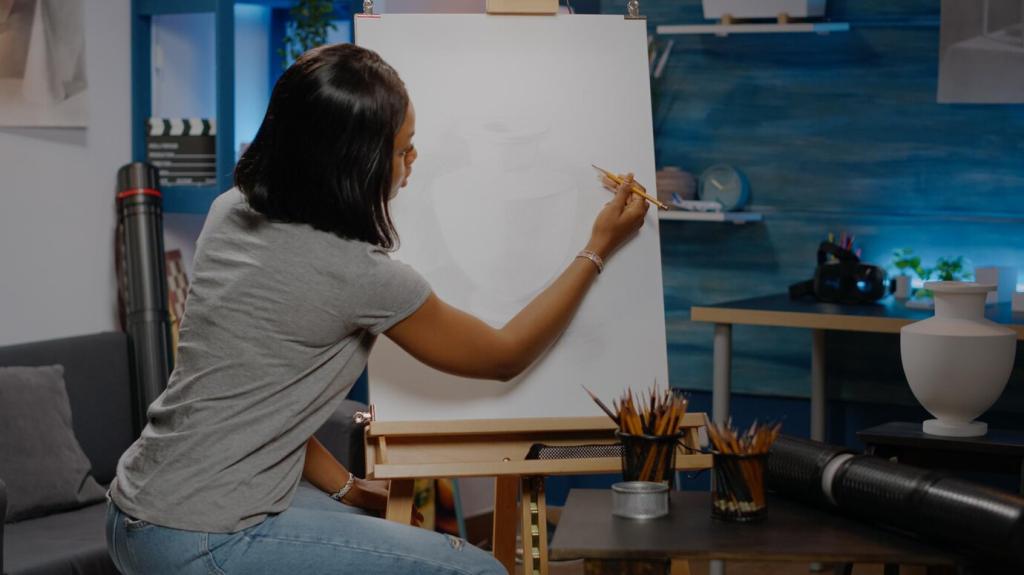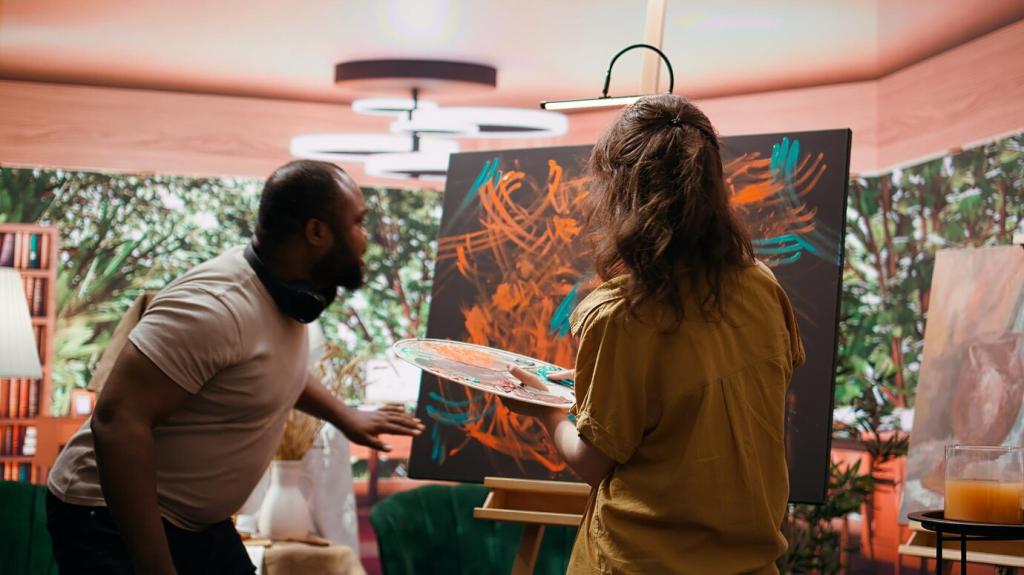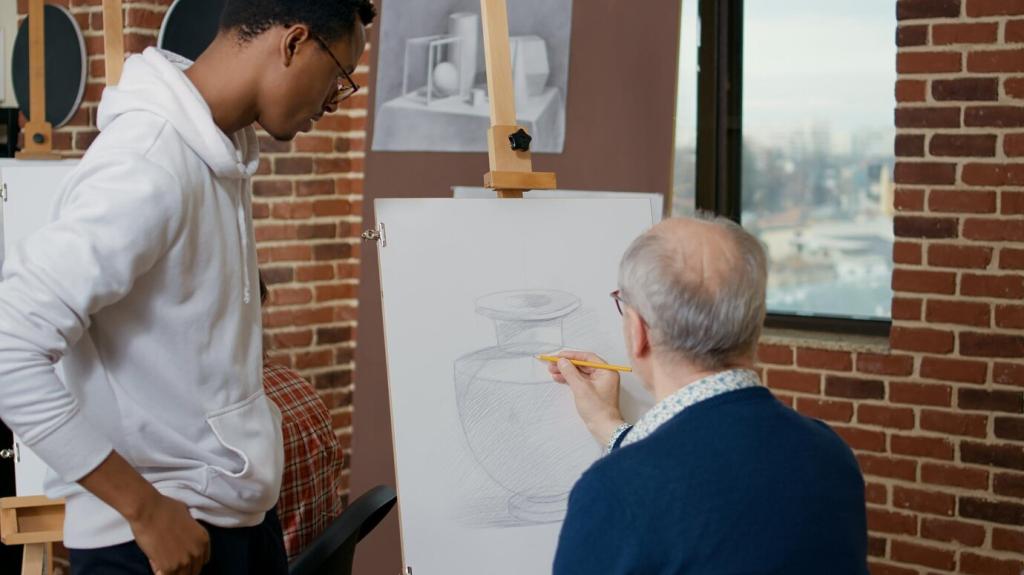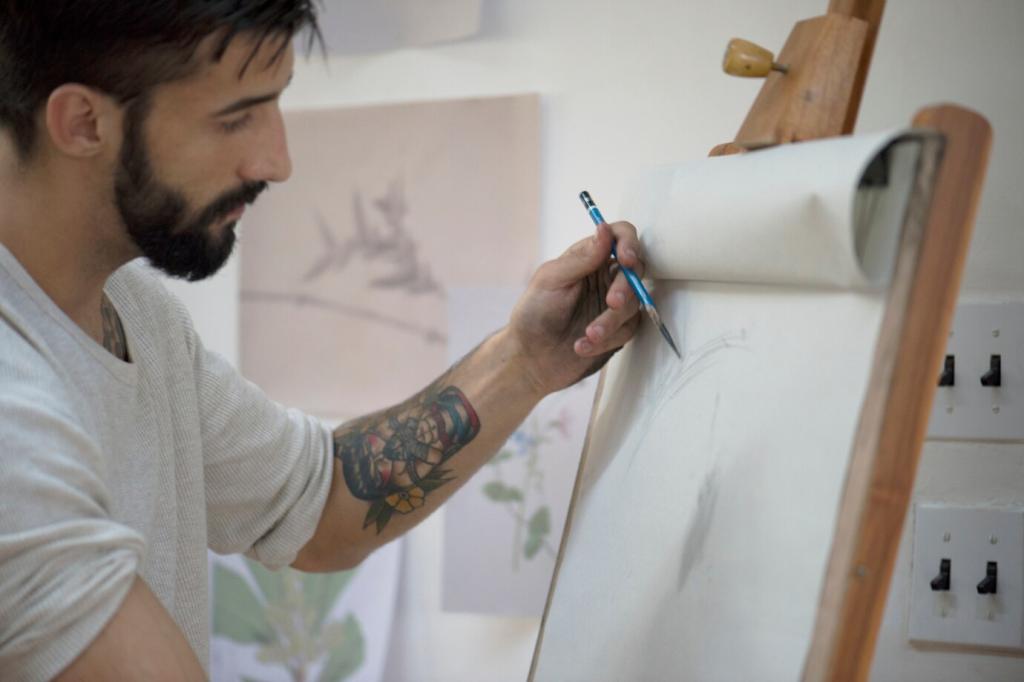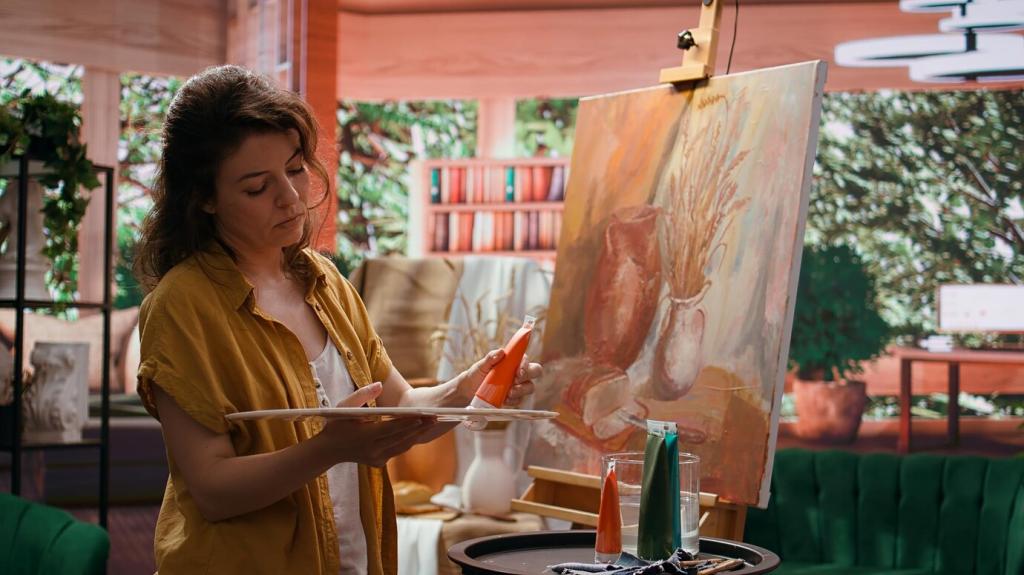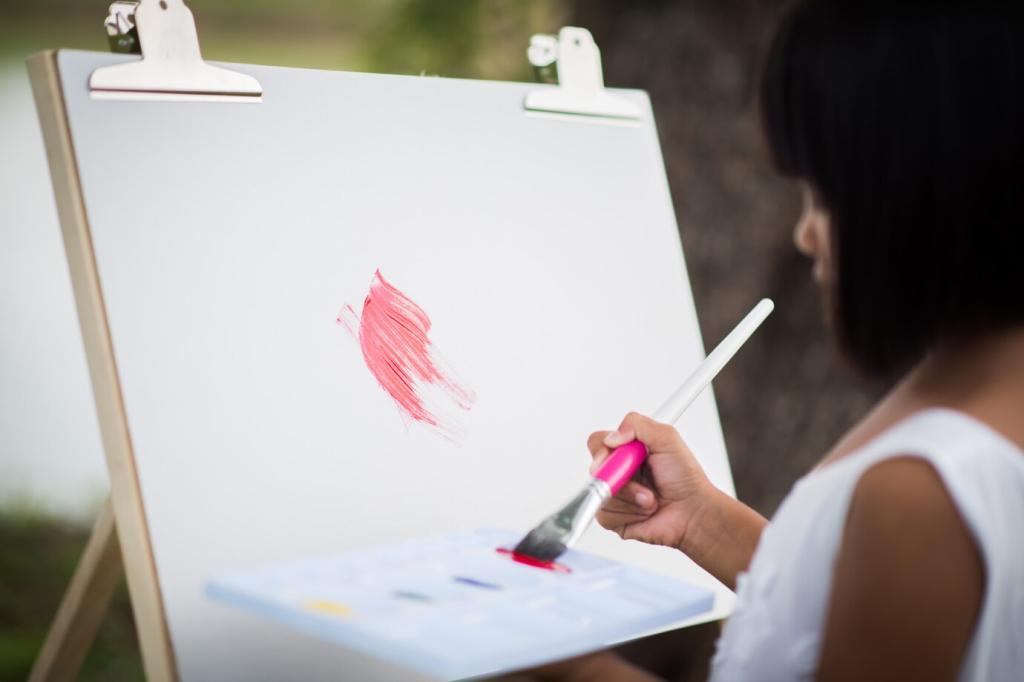Storytelling with Lines: Composition, Focus, and Emotion
Use converging lines to steer attention to your focal point. Block distracting tangents and organize value contrasts around key moments. Sketch a market scene and send lines toward a vendor’s face. Share your piece and annotate three compositional decisions that guided the viewer’s journey intentionally and clearly.
Storytelling with Lines: Composition, Focus, and Emotion
Low angles empower characters; high angles expose vulnerability. Three-point adds awe or dread. Build a storyboard trio of the same character from different angles. Post your set and ask followers which panel feels most truthful to the character’s arc, then discuss how perspective heightened that emotional beat.

